
Between
1942 and 1966, when Carl Barks wrote his numerous comic book
stories, he was able to extract many ideas from his own life.
Still, it is not always apparent to the reader exactly when he
used experiences from former jobs, hobbies, and family life. This
page will show you a few examples - presented in loose
chronological order - but there are many more. Nowadays, when
Barks' life is commonly known by fans, you may be able to add a
number of other examples such as stories about lumberjacking,
farming, horseback riding, and cow handling.
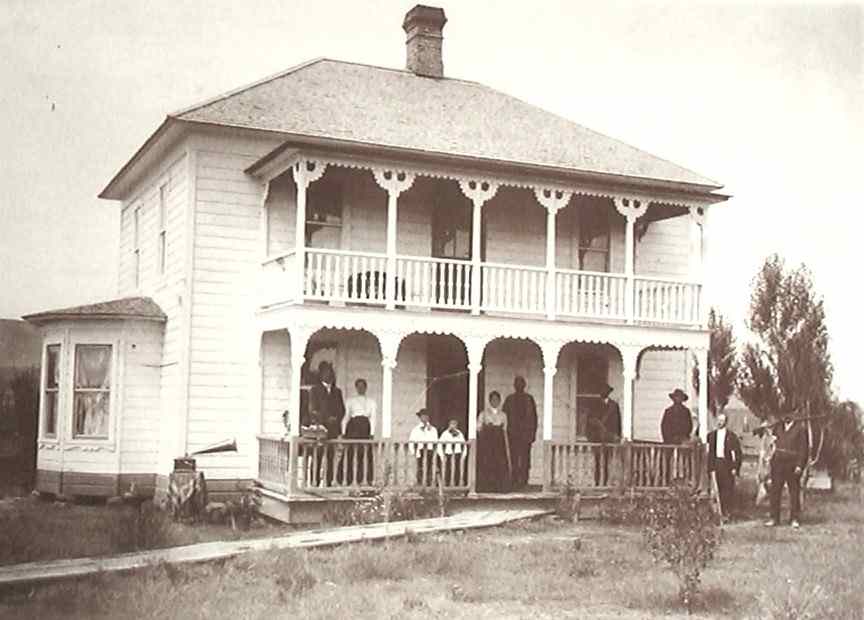
The Barks
ranch house about 1906 |
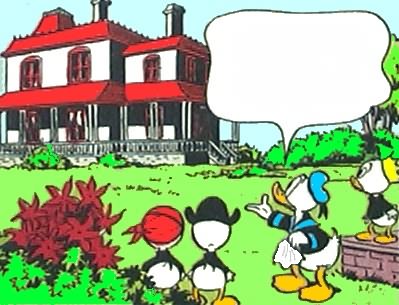
WDCS154 |
Barks
would constantly draw all sorts of different
buildings in his panels. This example from WDCS154
resembles his first home in Oregon.
|
|
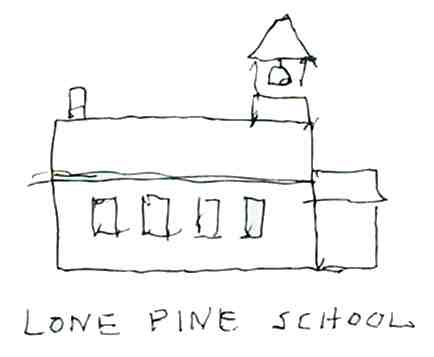
Memory Sketch
by Barks from 1993 |
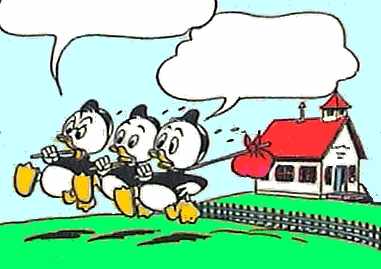
WDCS133 |
Young
Carl attended a typical one-classroom school in a
small wooden building on skids so that it could
be moved from place to place in the area in order
to be close to the greatest number of children.
It had only one teacher who taught 12 students -
small children and teenagers alike. The classroom
also contained a small library with novels by
Charles Dickens and poems by Henry Longfellow.
Barks' favourite subjects were arithmetic,
history, and geography. |
|
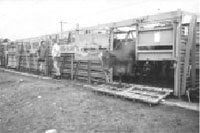
Early Twentieth Century Cattle Train |
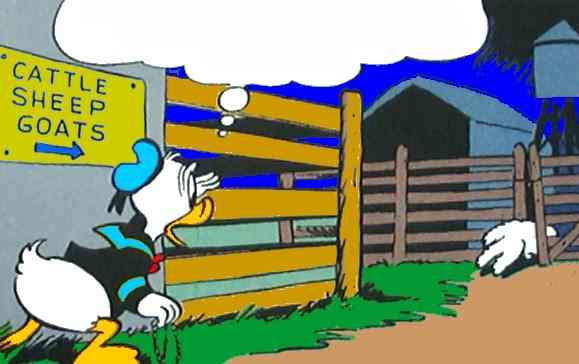
WDCS238 |
In 1908, when the
farm failed, Barks' father got a job at the new
railroad station in the neighbouring
town of Midland. He realized that there was a
future in railroads, and both he and his boys
were employed with the cattle
transports feeding the livestock in the corrals
before moving them down the line for slaughtering.
|
|
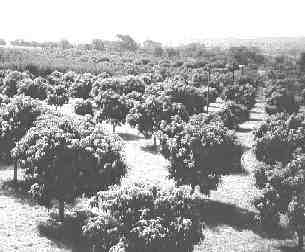
Typical Plum Orchard |
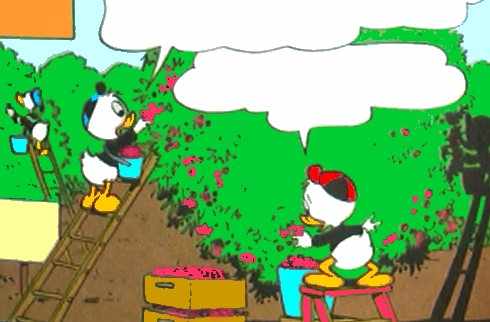
WDCS190 |
One
day in 1911 Barks' father took the whole family
and moved from young Carl's ancestral home in
Oregon to Santa Rosa in California where they
started working in a large plum orchard. Father
Barks had had some fruitful years in California
before he met his wife, and he was convinced that
they would strike it rich. Unfortunately, those were
the worst years within memory of man for
harvesting plums, and the small family was forced
to return to the farm in Merrill.
|
|

1916 |
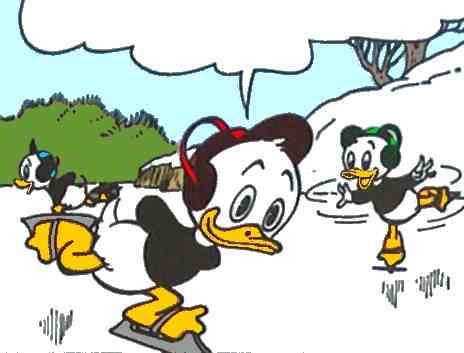
WDCS112 |
Barks
never had many hobbies, but in his youth he
participated in activities with his friends. Here
he is seen skating (X marks the spot) on a nearby
lake.
Later on he probably remembered these good times,
because he wrote a number of stories about ice
skating. |
|
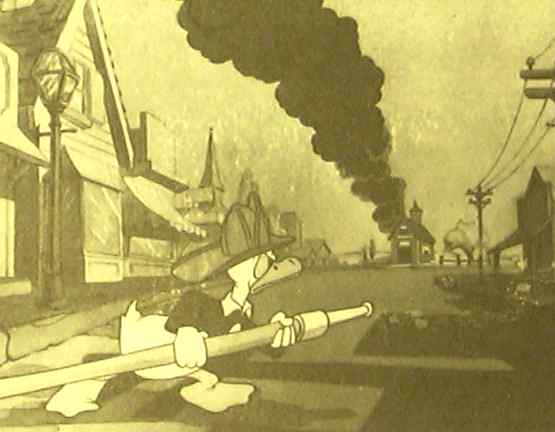
Fire Chief |
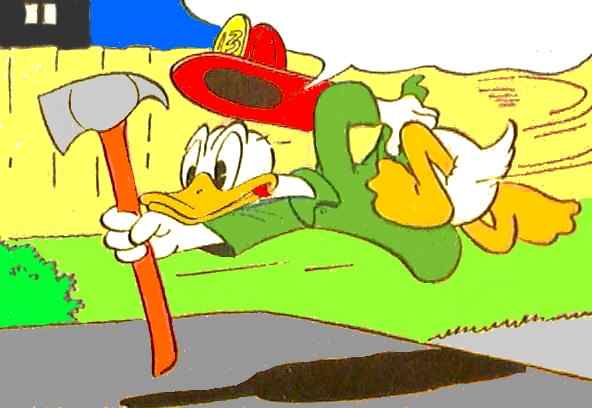
WDCS086 |
Especially
in the beginning of his comic book story career,
the mid 1940s, Barks used a number of gags which
he took from some of the animated shorts that he
had worked on previously in Disney's Story
Department. Examples
are Sea Scouts (WDCS033), Donald's
Snow Fight (WDCS043), Fire Chief
(WDCS086), and Truant Officer
Donald (WDCS100).
|
|

Perry Como |
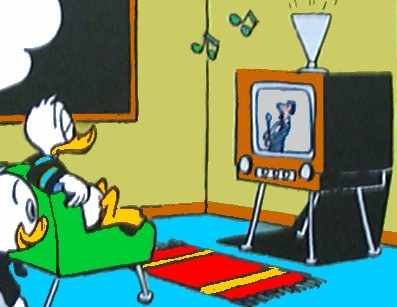
WDCS165 Perry Cougar |
Barks always liked music but he
never listened to it while he was working. He
never was especially interested in the latest
novelties in the audio market and he only owned a
CD player in his last years because some friends
bought it for him. Barks' taste in music
tended to be the works of composers like Steven
Foster (Oh Susanna) and singers like Perry Como (Catch
A Falling Star) and Bing Crosby (White Christmas).
In
WDCS165 he incorporated
caricatures of Perry Como and pianist/showman
Liberace under the names of Perry Cougar and
Lizardaze.
|
|

The ranch photographed in 1995 |
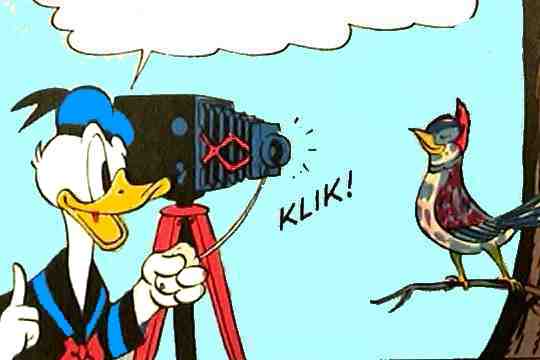
WDCS057 |
Barks was very fond of the art of
photography, which was also reflected in a number
of stories where Donald Duck was a photographer.
In Barks' later years he owned a number of
professional cameras that - among other things -
were used to take pictures of his paintings at
different stages of completion.
In 1995 Barks stopped by his ancestral home in
Oregon where he took photographs of the farmhouse
and the surroundings from the highway. |
|
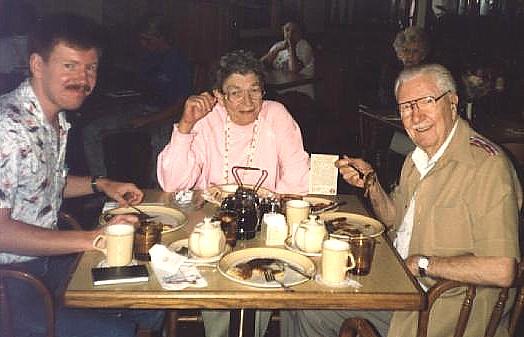
Göran Broling*, Garé, and Carl at Elmer's |
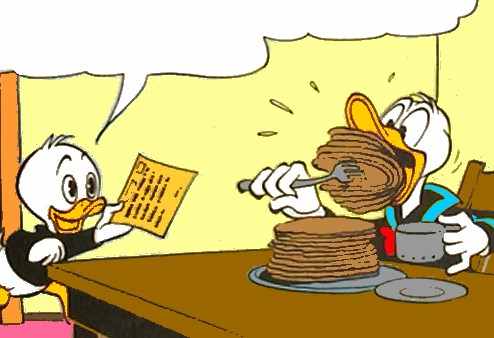
WDCS264 |
Barks
was not picky when it came to food - he liked all
good cooking. His favourite meal during the
daytime was a good old-fashioned country
breakfast with pancakes and eggs. This was very
important to him and after his wife Garé died in
1993 he would go every Sunday morning to have a
wholesome breakfast at Elmer's Pancake House in East
Grants Pass.
|
|
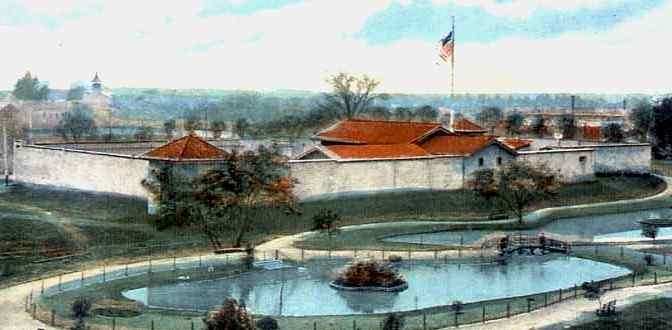
Sutter's Fort
at Sacramento, California |
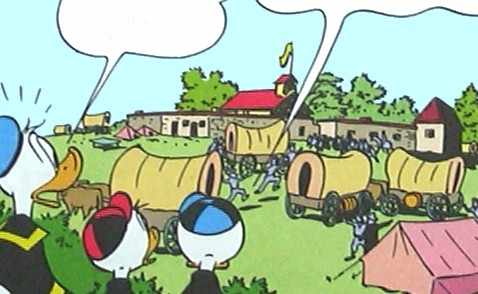
FC0328 |
In a
great number of ten-pagers Barks would
draw locales that were very familiar to him
because he lived in the same sort of surroundings.
And even one adventure story was filled with
locales from his own 'backyard' - 0328 In Old
California! from 1951. But it was in 1943 when
Barks drew his first example of the mountains
outside his windows in San Jacinto in a panel of WDCS036.
|
|
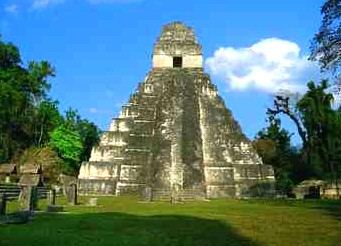
Mayan Temple
Ruin |
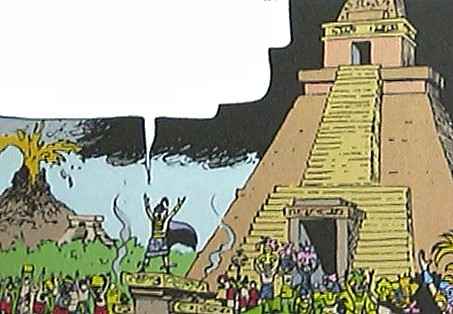
U$44
Crown of the Mayas |
Barks
had his ducks travel to numerous countries.
Though he had never really been to these places,
he could always count on assistance from the
National Geographic Magazine to make the drawings
come out realistically. Barks was increasingly interested in
the ancient times. This was reflected in his many
comic book stories based upon myths from Greek
and Nordic mythology, as well as other ancient
lands.
|
|
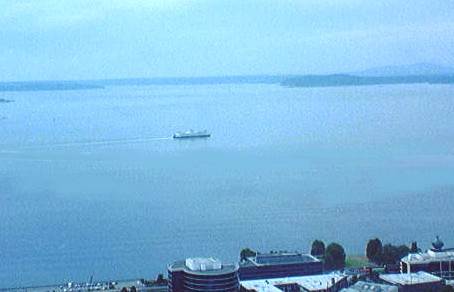
Puget Sound
Today |
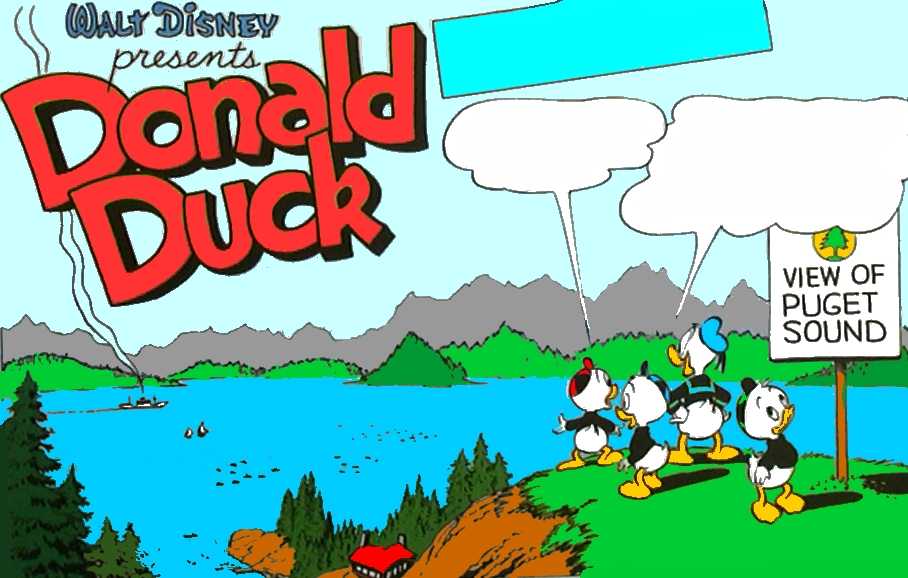
WDCS167 |
Barks
always took his cameras along when he travelled.
He often used them to photograph locations that
he could use in his stories.
This example is from WDCS167 from
1954 where the ducks visit Puget Sound to fish
for salmon. The location - as seen here in Barks'
very first half-page splash panel - was drawn
from a real site by the same name in Washington
State when he visited his older daughter Peggy*. |
|
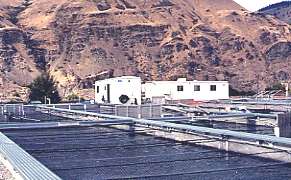
Modern Salmon
Hatchery |
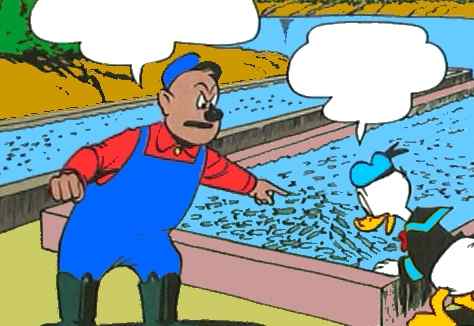
WDCS192 |
Daughter
Peggy's husband worked at a salmon hatchery close
to Puget Sound, and in 1956 Barks wrote a story
in WDCS192 based on casual
observations at the site. In the story Donald
claims to be a fish culture expert. In U$37 Deep Down
Doings from 1962 Barks hatched yet
another story with a salmon hatchery as the same
basic motif.
|
|
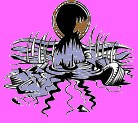 |
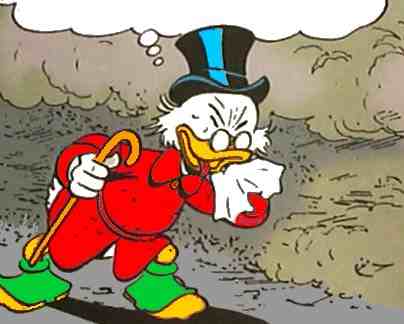
U$18 |
Barks had strong opinions about the
mistreatment of the environment. He mostly
campaigned against industrial misuse of the world's
ecology in the 1970s. He often commented on the
general deterioration of the environment in his
Junior Woodchucks stories in the HDL series.
But long before the environmentalists 'took over'
Barks was attacking man's destruction of nature.
In 1957 he wrote U$18 Land of the Pygmy
Indians which made it clear that people
mistreated their surroundings by thoughtless
pollution of air and water. |
|
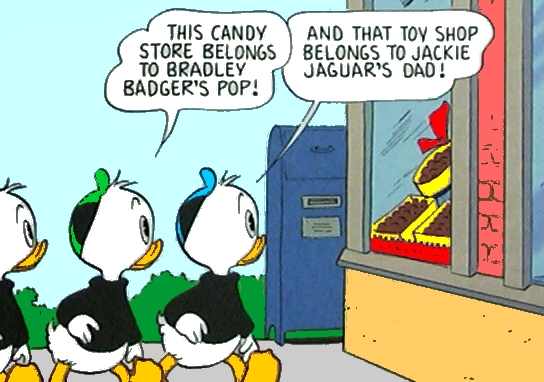 |
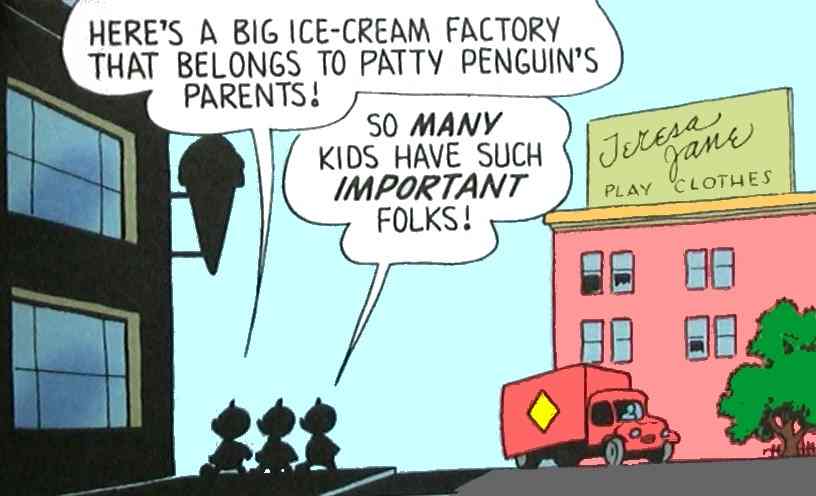 |
In WDCS210
from 1958 Barks paid tribute to his grandchildren
by mentioning them in the first panels of the
story.
Their names are Bradley, Jackie, Patty, and
Teresa Jane. |
|
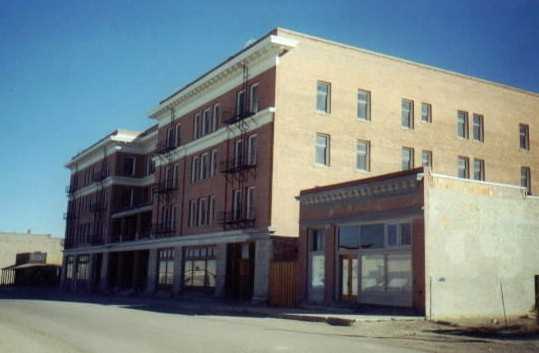
Goldfield
Hotel, Nevada |
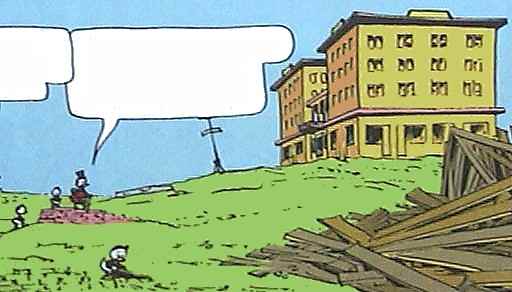
U$56 Mystery of the Ghost Town Railroad |
In 1964 - during a car trip - Barks
and Garé drove by a hotel in Nevada which was
said to be haunted by a girl and her newborn baby
who had both been killed. That was all Barks
needed to dream up a story about a ghost infested
hotel. Other examples: A vacation to
British Columbia gave scenes to FC0263
Land of the Totem Poles, and a trip to
Disneyland triggered FC1025 Mastering the
Matterhorn.
|
|
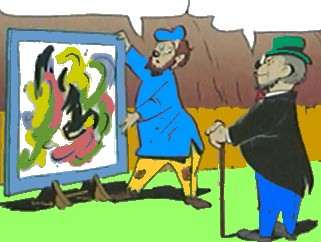
WDCS286 |
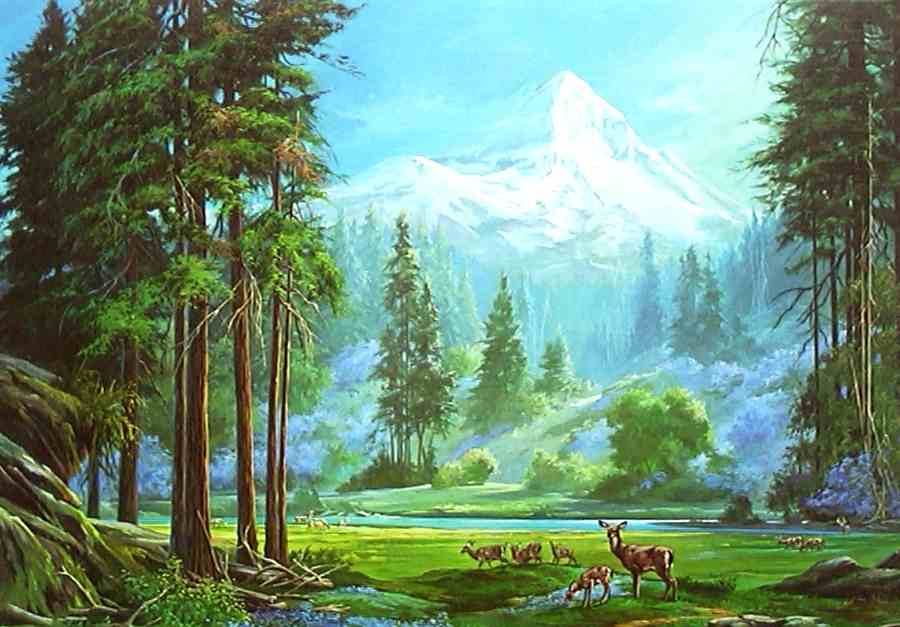
'Mountain
Laurel Time' by Garé |
Barks
disliked modern art. This should come as no
surprise when one thinks of both his and his wife
Garé's enormous output of 'straightforward',
realistic paintings. Neither of them ever even
attempted to produce any type of modern art.
In WDCS294 Barks satirized the
subject by letting Gladstone Gander win first
prize for a 'painting' consisting of incidental
objects glued to the canvas. |
|
| http://www.cbarks.dk/THETESTIMONIES.htm |
|
Date 2005-08-25 |

